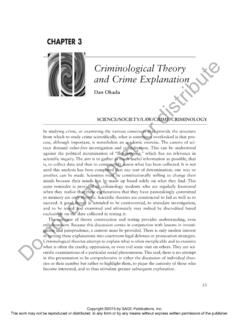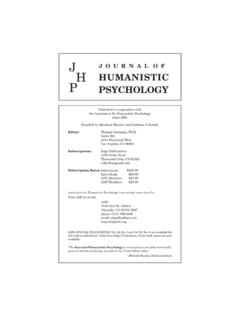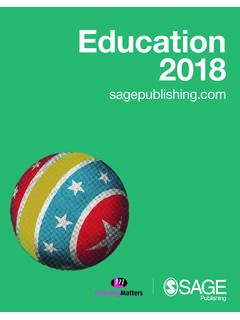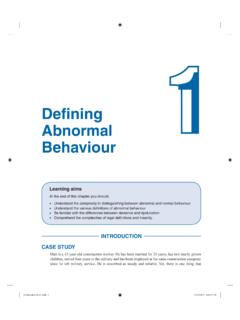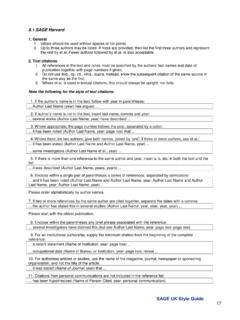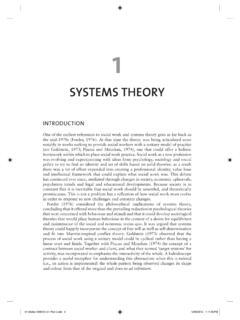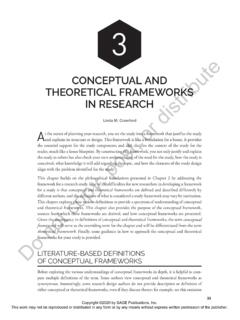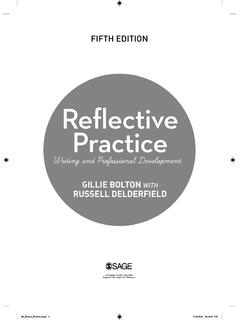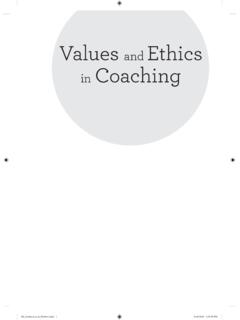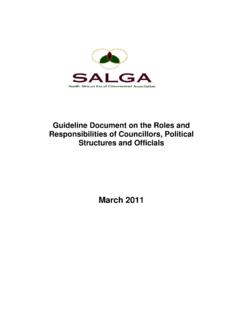Transcription of Coaching Roles and Responsibilities
1 1. Coaching Roles and Responsibilities I never teach my pupils. I only attempt to provide the conditions in which they can learn. Albert Einstein T here is nearly universal acceptance today that schools need to change. Our K 12 educational system has always been shaped by our economic and social needs. Unfortunately, Sir Ken Robinson observed, The current [educational] system was designed and conceived for a different age (Robinson, 2010). Most of us no longer work in manufacturing or on the farm as we did just one generation ago. Today we work in a service-based economy in which the success of companies like is driven by a chief logarithmic officer.. For most of us, this is hard to imagine. Logarithms were one more aspect of math class that convinced us that math had no 1.
2 2 Peer Coaching meaning beyond high school. Now they drive innovation. Our life beyond work has also been transformed. Technology has changed how we communicate, access information, buy prod- ucts and services, and even entertain ourselves. Who would have imagined just 10 years ago that a film about a guy who created a social networking app would be a Best Picture nomi- nee for an Academy Award? Until quite recently, my social net- work was defined by how many people liked my Christmas card and sent one back. Responding to these changing circumstances, business and political leaders in countries around the world have defined the skills they need and want from education. Educational and busi- These policy makers who define the skills students ness leaders agree that there is a need insist that students must consistent set of skills students develop skills in the four Cs: need to master to be success- critical thinking ful in today's changing work- communication place.
3 The Partnership for 21st collaboration Century Skills, a group made up creativity of American business and educa- tional leaders, reflects many ideas commonly held by leaders around the world. These policy makers insist that students must develop skills in the four Cs: critical thinking communication collaboration creativity (Partnership for 21st Century Skills, ). Based on my conversations with thousands of educators from more than 50 countries around the world, it is clear to me that educators agree. When I have asked them to define the skills and competencies their students need for success, their lists always include the four Cs. Most of these same educators believe that traditional education will not prepare students with those critical skills.
4 Researchers agree. Richard Elmore (2004) found that in far too many classrooms today, student learning emphasizes Coaching Roles and Responsibilities 3. repetition and memorization; assessment typically asks students to repeat what they learned from the teacher or text by completing tests that stress recall and recognition. Educators and policy makers from across the United States banded together to create the Common Core State Standards, at least in part because of the growing consensus that tradi- tional education was not preparing students with the kinds of skills they need for success. Even a cursory reading of the Common Core State Standards should make it clear that the authors of these standards believe there is a need for funda- mental improvement in teaching and learning in ways that would help students develop 21st-century skills.
5 So here is the $64,000 question: What do schools need to do if they hope to improve teaching and learning to meet stu- dents' needs? For more than a decade, I have found that Peer Coaches can play a critical role in helping teachers improve student learning. Coaches aren't the whole answer, but they are an important part of the answer. Coaching : GETTING STARTED. In its simplest terms, Peer Coaching is one teacher helping another to improve. A Peer Coach is a teacher leader who assists a peer to improve standards-based instruction by supporting the peer's efforts to actively engage students in 21st-century learning activities. Coaches help colleagues improve teaching and learning by assisting them to develop the necessary lesson-design skills and instructional and technology Coaching is certainly not integration strategies needed to a new idea.
6 Athletes, pro- prepare their students for college fessional singers, and busi- and careers. ness executives have long used coaches. For educators, Coaching is certainly not a Coaching has much deeper new idea. Athletes, professional roots. The methodology dates singers, and business executives back at least to Socrates have long used coaches. For more than 2,500 years ago. educators, Coaching has much 4 Peer Coaching deeper roots. The methodology dates back at least to Socrates more than 2,500 years ago. It is familiar to teachers. When pro- spective coaches learn about the Roles Peer Coaches play, they insist that they have coached others. As one Peer Coach noted, Peer Coaching helped give a formal name to things we're already doing, and gave us permission to do these activities.
7 (T. Calsyn, personal communication, September 8, 2011). While the idea behind Coaching is old and the concept of Coaching is easy to understand, there is nothing simple about being an effective coach. To explore how complex the task of Coaching is, let's try to answer a question a brand-new coach raised just after she had completed the training designed to help her develop Coaching skills. She was stuck and asked me, How do I get started Coaching ? What she really wanted to know was: What Roles should I play? As my relationship with my peers develops, when will it be appropriate for me to play Roles like expert or catalyst? How do I play these Roles ? Coaching Roles If a coach expects to be successful at helping another teacher improve student learning, the coach needs a clear idea of what Roles he or she will play before beginning Coaching .
8 The list of potential Roles a coach might play is extensive, but a handful are key. Coaches help colleagues by: Providing just-in-time training or resources (Meyer et al., 2011d). Teachers may want their coach to help them find a great resource for a learning activity they are planning. For example, they might need a resource for an activity that asks students how to preserve a rainforest. Or they may want a bit of training on how to set up a SkyDrive so their students can more easily collaborate on a forest- preservation project with students in others countries. Coaching Roles and Responsibilities 5. Coplanning learning activities (Meyer et al. 2011d). Teachers who collaborate with coaches often want to sit down for more in-depth planning. They may want a coach's assistance in revising an existing activity on pre- serving forests to emphasize problem solving, to engage students in assessing their own work, to recast the activ- ity so it has more meaning to the students' lives outside of school, or to use technology so the students can share their work with the community and get feedback.
9 Modeling or team teaching to demonstrate effective teaching and reflection afterward (Meyer et al., 2011d). I have found that teachers from all of the 50 countries that I have worked with want to see what strong teach- ing looks like. In fact, teachers who work with coaches often say this is the most effective form of Coaching . To see strong teaching in practice, the teacher may watch the coach teach, or the coach and teacher may team- teach. Modeling is more than just showing. Typically the teacher and coach may meet before the classroom visit to define what they will be focusing on in the class- room and in their discussion after this observation. The reflection after the observation gives the teacher and coach an opportunity to discuss what occurred, how the collaborating teacher might adopt these ideas, and what kind of support the teacher might need from the coach as they adopt this practice.
10 Observing teachers and reflecting on what they observed (Meyer et al. 2011d). At some point in the Coaching relationship, after trust is established, teachers will ask their coach to observe them in their classrooms. In the reflection that fol- lows the observation, This process of observation it is important to define and reflection is the most what worked and why it effective form of formative worked in order to dis- assessment for educators. It is cuss how the teacher could their key to life-long learning. use what worked in other 6 Peer Coaching learning activities. These reflections also include what the teacher being observed might do differently next time. This process of observation and reflection is the most effective form of formative assessment for educa- tors.
